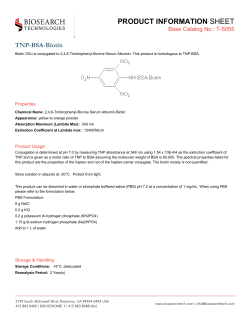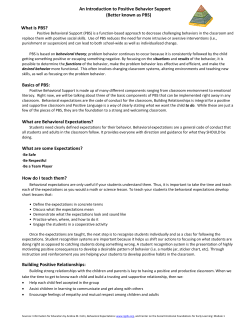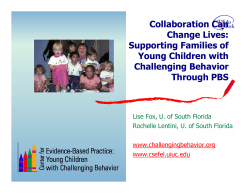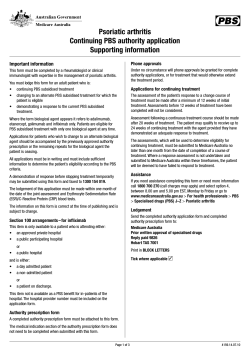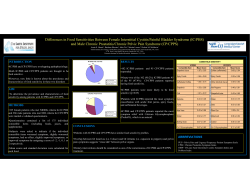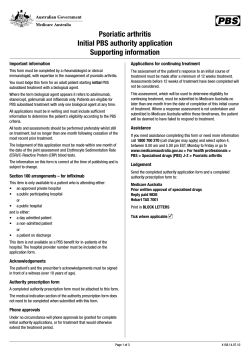
Measuring Behavioural Outcomes with Polling Booth Surveys
Measuring Behavioural Outcomes with Polling Booth Surveys B.M. Ramesh, PhD Department of Community Health Sciences, University of Manitoba, Winnipeg, Canada & Karnataka Health Promotion Trust, Bangalore, India 1 Background • Focused HIV prevention program in 6 high prevalence states in India – KSAPS implementing the program in 9 districts of Karnataka – KHPT implementing the program in 16 districts in Karnataka and 3 districts in Maharashtra. • Main objective is to reduce the incidence of HIV and STIs. • Monitor changes in condom use and other sexual behaviours • Polling Booth Surveys (PBS) among FSWs 2 What is polling booth survey? • Polling booth survey is: – A group interview method – Where the individuals give their responses through a ballot box – Where the individual responses are anonymous and unlinked 3 Polling booth survey: Advantages • More suitable to collect information on sensitive and personal issues • Reduces social desirability bias • Respondent remains anonymous • Easy to administer among the illiterate • Increases sense of confidentiality among participants • Simple to analyze • Not individualized face to face interview, but a group approach using a moderator giving 4 instructions Comparison of face-to-face interviews with PBS • Among FSWs – The FTFI tends to overestimate the condom use behaviour – The PBS tends to minimize the exaggeration of reported condom use • Among the general population – The FTFI tends to underestimate the risky sexual behaviours – The PBS tends to give a relatively higher reporting of risky sexual behaviours 5 Comparison of FTFI and PBS for eliciting sensitive behaviours among unmarried subjects in Mysore GPS Unmarried women Unmarried men FTFI (n=534) PBS (n=545) FTFI PBS (n=882) (n=484) Ever taken HIV test* 0.6% 2.5% 2.5% 4.5% Vaginal (urethral) discharge last year 3.4% 20.9% 0.5% 7.9% Genital ulcer last year 0.6% 7.7% 0.3% 7.6% 30.3% 47.9% 67.5% 76.0% Ever had heterosexual sex 0.6% 2.4% 8.3% 20.9% Ever been paid / paid for sex 0.0% 0.6% 1.8% 6.2% Ever had anal sex with a man 0.0% 0.6% 0.8% 6.6% Year – 2005/06 Ever seen a condom *Among those who have heard of HIV/AIDS 6 Comparison of FTFI and PBS for eliciting sensitive behaviours among married subjects in Mysore GPS Married women Year – 2005/06 Married men FTFI (n=2036) PBS (n=575) Ever taken HIV test* 6.1% 14.6% 3.1% 6.0% Vaginal (urethral) discharge last year 3.5% 27.5% 0.1% 10.5% Genital ulcer last year 0.8% 17.6% 0.1% 6.1% Pre-/extra-marital sex ever 0.8% 10.3% 18.7% 35.9% Ever been paid / paid for sex 0.3% 3.1% 2.3% 7.6% Husband (wife) ever had extra-marital sex 10.3% 29.9% 0.5% 2.7% Husband ever had sex with FSW 1.9% 12.4% NA Ever had heterosexual anal sex 0.5% 4.4% 3.0% 5.6% Ever had homosexual anal sex NA 0.5% 5.4% *Among those who have heard of HIV/AIDS FTFI PBS (n=1201) (n=409) 7 Comparison of FTFI and PBS for eliciting sensitive behaviours among unmarried subjects in Belgaum Unmarried women Unmarried men FTFI (n=464) PBS (n=631) FTFI PBS (n=947) (n=750) Ever taken HIV test* 3.4% 3.0% 2.6% 8.3% Vaginal (urethral) discharge last year 0.7% 17.1% 1.9% 16.5% Genital ulcer last year 0.0% 5.4% 1.2% 13.2% Ever seen a condom 17.0% 19.0% 75.7% 79.7% Ever had heterosexual sex 1.1% 2.7% 5.6% 19.9% Ever been paid / paid for sex 0.0% 0.2% 0.8% 8.5% Ever had anal sex with a man 0.0% 0.5% 0.6% 4.9% Year - 2007 *Among those who have heard of HIV/AIDS 8 Comparison of FTFI and PBS for eliciting sensitive behaviours among married subjects in the Belgaum Married women Year - 2007 Married men FTFI (n=2055) PBS (n=715) FTFI (n=1456) PBS (n=707) Ever taken HIV test* 19.5% 20.9% 8.5% 15.9% Vaginal (urethral) discharge last year 2.3% 19.9% 0.6% 17.7% Genital ulcer last year 0.2% 14.5% 0.4% 11.0% Pre-/extra-marital sex ever 0.2% 9.1% 11.7% 35.1% Ever been paid / paid for sex 0.2% 3.6% 2.1% 12.9% Husband (wife) ever had extra-marital sex 5.9% 15.5% 0.1% 3.7% Husband ever had sex with FSW 0.9% 7.3% NA Ever had heterosexual anal sex 1.4% 7.8% 1.0% 5.4% Ever had homosexual anal sex NA 0.2% 5.9% *:Among those who have heard of HIV/AIDS 9 PBS methods (1) • • • • • Members are separated from each other in a polling booth environment Each participant is given 3 boxes (Red, Green and White) and a pack of cards Cards are numbered corresponding to the number of questions asked Cards are stacked in serial order Responses – – – – Card with the number corresponding to the question asked is put into the Green box if the response to the question is YES Card is put into the Red box if the response is NO Card is put into the White box if the question is NOT APPLICABLE Card is kept outside these boxes if the participant does not want to respond to that question 10 PBS Method (2) • The moderator explains the PBS method with an example and a practice session • Questions are read one by one • The moderator needs to – Make the exercise lively – Ask each question clearly, slowly and loudly so that every participant hears the question clearly, repeating the question as required – Use situations/stories while asking the question – Use local terms – Give sufficient pause, and 11 not to hurry PBS Method (3) • At the end of administering the questions: – Collect the cards separately: the ones that are in the Green boxes, the ones that are in Red boxes and the ones that are in the White boxes – Count the number of cards in each box for each question and record the tallies in the reporting form • Share and discuss the group responses with the participants • Document group discussion points 12 Sampling in PBS • The subjects for the PBS may be recruited using any of the probability sampling methods 13 Polling booth questions • Only the questions that have a definitive YES or NO as answers are suitable to be canvassed in PBS – How often do you use condoms with your regular clients? (Not suitable for PBS) 15 Challenges/Limitations • Non-response could be higher as not all selected individuals are able to participate in a group at the designated time and place • Can include only the questions that have a YES or NO answers • Can ask only a limited number of questions – questionnaire cannot be as long as the one that could be used in a face-to-face interview • Can get only the group-aggregated data, and cannot be analyzed with linkages to individual characteristics 16 For more information Dr. B.M. Ramesh, Director, Monitoring and Evaluation Karnataka Health Promotion Trust IT Park, 5th Floor, #1-4 Rajajinagar Industrial Area Rajajinagar, Bangalore – 560 044, INDIA Ph: +91-80-40400209 Email: bmramesh@khpt.org 17
© Copyright 2025
